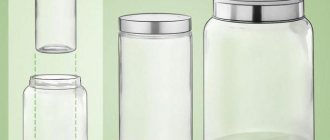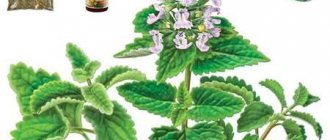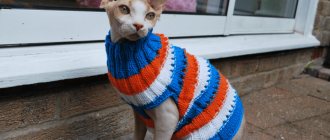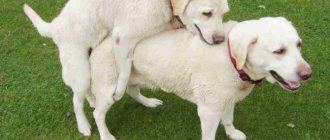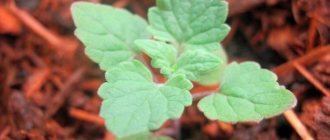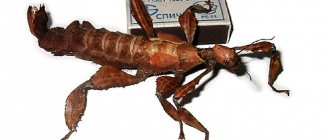Many people consider contemplation of hardworking goosebumps an interesting activity. Currently, this can be done using a special device called an ant farm (formicarium). Caring for insects is simple and even a child can do it.
What is an ant farm?
This is a special container that is filled with gel, sand or other filler. Little workers will create an imitation of a full-fledged anthill and will conduct their active activities in it. Such a home formicarium helps you to easily observe everything that happens inside without interacting with insects. Understanding what an ant farm is, it is clear that its maintenance does not cause problems. This activity is so exciting that it will appeal to pet lovers of all ages.
Those who decide to become the owner of a formicarium for the first time are interested in how long ants live in an ant farm. On average, the lifespan of a queen is 10-15 years. The rest of the ants live much shorter, for example, the working species lives about 3 years, but the queen manages to lay the required number of eggs, so their deaths are unnoticeable, and the colony is constantly growing.
What does an ant farm look like?
A modern ant farm has the following elements in its design:
- The arena
is a space without partitions or compartments; it is covered with decorative sand and decorated with decor. A place where residents spend most of their social life. - Move system
. Inside, the vertical ant farm is divided into many passages and compartments. For a full life there must be at least 3 chambers: a place where the queen will lay eggs, for food supplies, for garbage. - Humidification chamber. To solve this problem, removable plaster inserts are used. The quantity is chosen depending on the size of the passage system.
Ant farm – what is it for?
Many people unfamiliar with these insects are interested in why an ant farm is needed. These insects are socially active and therefore will be interesting for children and adults to watch. The first will be able to get to know nature better and learn more about the creatures that have lived on Earth for several million years. Adults will be able to disconnect from everyday worries and relax. A farm is an excellent solution for those who do not like to spend a lot of time caring for their pets.
Cereal types
This group includes the reapers, popular among the Myrmikeepers. They eat mostly carbohydrates and only occasionally protein foods. Their main feature is the ability to make flour, for which they crush the flour and mix it with water. Beginners are advised to keep just such ants, since they can be left for a long time, providing a supply of food.
If you decide to place reapers in the formicarium, then there will be no problems with them. The main thing is to feed the insects and give them water in a timely manner. Such ants carefully monitor their food supplies, filling entire chambers with seeds and organizing their ventilation.
How do ants reproduce in an ant farm?
Fertilization of the uterus occurs once in a lifetime. She uses the resulting sperm gradually throughout her existence. It already enters the artificial anthill after fertilization, which occurs under natural conditions. After this, the female looks for a new nest and becomes the queen of her colony. The first eggs help give birth to worker ants, which will provide a normal life for the queen and future offspring. The queen feeds them on her own thanks to her reserves.
Afterwards, she chews off her wings, and throughout the rest of her life she continuously lays eggs to increase her colony. The house ant has 4 stages of development:
- egg;
- larvae;
- chrysalis;
- imago.
How to choose an ant farm?
It is recommended to select carefully:
- Safety. The structure must have no sharp parts or elements so as not to harm insects or observers.
- The container must be made of non-toxic materials. It must contain a ventilation system, thermostats, drinking bowl and other elements.
- Understanding what an ant farm is, it is clear that the container should be spacious and transparent.
- Filler. You can use sand or a special gel. It all depends on personal preference.
Gel ant farm
The most popular formicarium option for novice breeders who are little familiar with the needs and habits of these insects. This ant farm is an aquarium with transparent or blue gel. This filler is completely safe; it was developed by American NASA scientists. For insects, this substrate is food; an empty container can be refilled with new portions without disturbing the inhabitants.
Such an ant farm requires lifting the lid once every few days. This is used to ventilate and remove dead insects. The shelf life of the gel is 4 years. However, in such an environment, insects do not reproduce and live only up to 3 months. Afterwards, the new colony is settled.
Relocation of a colony or expansion of a residential module
It may happen that you need to move a colony from one formicarium to another (the appearance of mold, damage to the farm) or expand the living space of the ants. It is not difficult. Our trusses are supplied with the necessary parts.
- Prepare the living module where you want to move the colony properly: remove it from packaging, moisten it, etc.
- Insert the appropriate plugs (with round holes) into the relocation/expansion holes.
- Connect the relocation/expansion tube to the modules by inserting it into the holes in the plugs.
- If you are expanding the ants' living space, you don't need to do anything else.
- If you move the colony to another module, stop humidifying the original living space. Place food in the arena of the new farm and darken the passages with thick paper or cloth.
- After relocating the colony, remove the tube and place a blind plug in the relocation/expansion hole.
How to make an ant farm?
It’s easy to create a formicarium with your own hands; you will need the following equipment:
- a large and small glass jar with a screw cap;
- earth mixture (sand 1 part, earth 2 parts);
- tool for making holes;
- cotton swab;
- sugar syrup.
The process of creating an ant farm includes the following steps:
- The jars are sterilized with steam and dried thoroughly.
- Immerse the small container into the larger one.
- Holes for air are made in the large lid. One hole is made in the small one to secure the cotton swab.
- The earth mixture is poured between the jars.
- A few drops of sugar syrup are dripped onto the cotton wool.
- You can launch the first residents.
Accessories for ant farm
To live a full life, insects need careful care. Properly selected accessories can help with this:
- Feeder
. You can watch how little workers tirelessly carry food. - Drinking bowl for an ant farm
. It will help the goosebumps always have moisture for their needs and not feel thirsty. - Colored sand
. Used for decoration and to give originality to the formicarium. - Arena
. Helps to observe competitions between representatives of different families. - Temperature sensor and hygrometer
. These devices help monitor the temperature in the ant farm and notice changes in time that could lead to problems. - Magnifier
. The product helps to better see babies or problems that have arisen. - Pipette
. Used for proper distribution of sweet water, making it easier to add. - Cleaning brush or vacuum cleaner
. They help keep the Goosebumps house clean.
Decor for an ant farm
A standard formicarium can be decorated with different products, making it original. The benefits of decor are double: aesthetic and practical. At the same time, it is important not to overdo it, so that the goosebumps have room for games and movement. The small and large ant farm is decorated with the following elements:
- artificial turf or moss;
- colored stones or sand;
- marble chips;
- various wooden or plastic figures.
Possible diseases of the colony
If you notice that your charges have begun to get sick (sluggish, inactive) and die in large numbers (several individuals every day), you need to urgently look for the cause.
- The first and most common mistake novice keepers make is not following the instructions for caring
for the farm and colony. Solution: eliminate the consequences of non-compliance with instructions. - Ticks.
If you look at ants through a magnifying glass, you will notice, as it were, water droplet growths on the body of the insects. These are very dangerous parasites. Because of them, your colony is doomed to death. But we can and should try to save the population. Solution: contact us in any convenient way to get advice from biologists. - Poisoning.
This phenomenon is usually facilitated by spoiled food (protein that was not removed from the arena in time or small pieces that the ants dragged into the passages). Solution: remove the spoiled piece of food from the arena, place a drinking bowl with clean boiled water, and observe the activity of the colony. - Infection.
The source of infection for ants can be: insects from the street, tap water, foreign objects in the arena that were not treated before getting there. Solution: contact us in any convenient way to receive advice from biologists based on the current situation.
If you still have questions, you can always ask our consultants and biologists in any way convenient for you:
- Call us at: 8 800 2000-600 (toll-free) or order a call back on the main page of the site (top part, under phone numbers).
- Write via the feedback form on the website.
- Write to us by email
- Write to us on social networks: in contact: https://vk.com/antwill_ru, on Instagram: @antwill_ru.
Where to get ants for an ant farm?
There are several options for becoming the owner of a colony for a home ant farm:
- purchase at a pet store or poultry market;
- ordering in an online store;
- personal gathering in the natural environment.
If at the time of purchase you can count on a full-fledged colony, then in order to assemble it yourself, you will need to work hard. There is no need to destroy the anthill; it is almost impossible to find the queen and get her out without damage. You can try to find a fertilized female before she lays eggs. Natural mating season occurs in summer. Females ready to become queens differ from the rest in the absence of wings and a developed abdomen.
How to care for an ant farm?
For the colony to live as long as possible, it is important to create suitable conditions for it. Caring for an ant farm includes observing the following rules:
- the farm is located away from the bright sun;
- ants must be of the same type;
- the formicarium must be constantly moistened;
- only purchased food is given;
- Do not shake the container, this may destroy the passages;
- insects need darkness and warmth for comfort;
- it is important to exclude the occurrence of any vibrations near the farm;
- cleaning is carried out regularly.
What to feed ants in an ant farm?
For a full life, a colony of these insects requires two types of food:
- proteins for larvae;
- carbohydrates for adults.
For babies and the queen, you need to purchase food insects from a pet store: crickets, mealworms and other representatives. It is important to remember not to give your pets outdoor insects because they can be poisoned by chemicals. If it is not possible to buy suitable food, you can use veal, chicken, egg white or shrimp. There should be no problem with carbohydrates.
You can use sugar, fructose or glucose. In addition, ants readily consume fresh sweet fruits, marmalade or marshmallows. You can only put fresh food in the formicarium, the portions are not important, the insects themselves will figure out how much and when to eat. If you accidentally forget about feeding, the babies will start using the supplies that were made earlier and they will all live until the next time.
Feeding the inhabitants
Before you start feeding your insects, you need to make sure that the food you prepared is suitable for them. If you bought a starter kit that includes ants and ant food then you're good to go, just follow the included instructions. If you purchased everything separately, then first you need to figure out whether this food is suitable for your pets.
For example, harvester ants (Messor structor) are suitable for plant seeds and should not be given sugar-containing food; this is contraindicated for them. But Lasius niger, Lasius flavus, on the contrary, are very fond of sugar syrups and other food containing glucose.
Place food in the arena, making sure that it does not block the passages for the ants. There should not be too much protein food, otherwise the insects will not be able to eat it, it will become moldy or clog the chambers so that the ants will have to be relocated and the farm cleaned.
Also, when there is an abundance of food, the ants become lazy and stop working. The exception is plant seeds. The ants that feed on them will happily fill their bins with food supplies.
Do not feed a small colony live food. They, being in small numbers, will not dare to attack a large insect.
Never give ants food from the street - this can lead to the death of the colony. Use food purchased at a pet store.
Home-cooked protein foods (meat, chicken or liver) should be boiled, and never be salted or sprinkled with spices. Pieces of such food must be larger in size than the passages of insects, otherwise they will drag the meat to themselves, where it will spoil and harm its inhabitants.
Vacuum cleaner for ant farm
In order for the ant farm with ants to remain clean and comfortable for life, it is necessary to regularly clean out debris. You can do this quickly and efficiently using a USB vacuum cleaner. The device is small in size, but does the job well. Cleaning is carried out only in the arena, having previously made sure that all the goosebumps go into the passages.
Why do ants die in an ant farm?
The main causes of death include:
- unsuitable food;
- presence of diseases or parasites;
- microclimate disturbance;
- death of the uterus;
- filling the container with mold;
- additional factors.
In order for the formicarium for ants to be a comfortable home for insects for as long as possible, you need to know what the prevention of this condition is:
- beginners are recommended to have unpretentious species;
- learn a lot of information on myrmecology;
- Constantly monitor insects in order to make timely adjustments;
- follow the rules of care and nutrition.
